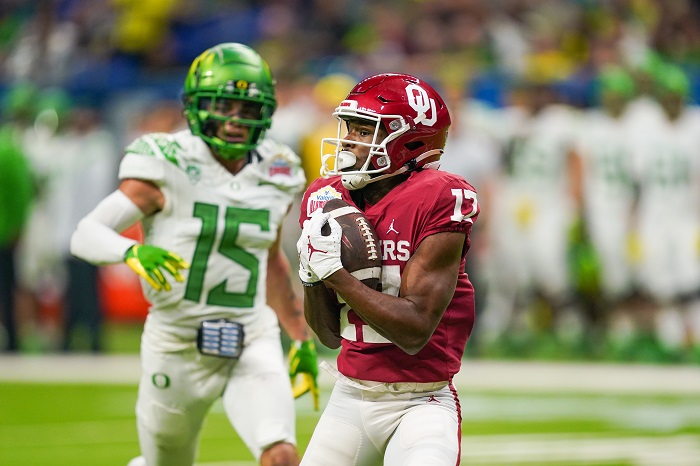College Football Overtime Rules Elaborated 2022
Teams could play to a tie for a large portion of college football history. Thankfully, we now have Overtime Rules in place to choose a winner, which is good for the history books and adds a degree of drama for players and fans.
The 1995 Las Vegas Bowl was the first playoff game to have overtime rules, which were implemented during the 1995–1996 bowl season. Toledo defeated Nevada 40-37 in the first possession of overtime after scoring a field goal.
COBEE BRYANT PICK-SIX TO WIN IT IN MORGANTOWN 😱 pic.twitter.com/PRzuFLtdNN
— ESPN College Football (@ESPNCFB) September 11, 2022
In the fall of 1996, regular-season games started to include overtime.
These are the most recent overtime regulations:
College Football Overtime Rules 2022-
-The captains of both teams assemble at midfield for a coin toss to decide possession at the conclusion of regulation.
-The victor of the coin toss decides whether his team will play on the offensive or defensive side of the field. This team will use that choice in all overtime periods with an odd number (i.e. the team that starts with the ball in the first overtime will start with it in the third overtime). In overtime, with even numbers, the opposing team gets to choose.
The Best College Football Team In Every State
(So Far) pic.twitter.com/WqrX0il0JE
— Big Game Boomer (@BigGameBoomer) September 11, 2022
-Each side has one untimed possession in each of the first two overtime sessions, which starts on the 25-yard line of the opposition. The defence cannot advance the ball on a turnover, in addition to the absence of a game clock.
-For each overtime period, each team has one timeout. There is no regulation carryover for timeouts, and they cannot be saved and banked for use during overtime.
College football is superior to NFL I will die on this hill
— Molly J (@MolVol_) September 10, 2022
-Teams must attempt a two-point conversion after scoring a touchdown as extra points are no longer permitted as of the second overtime period.
-Instead of playing complete possessions, teams will swap two-point conversion attempts beginning with the third overtime period.
College Football Overtime Rule Brings change To Proposals-
The NCAA approved the most current overtime rule modification proposal in 2021. As mentioned earlier, it was done to abbreviate games and reduce attacking repetitions.
No. 6 Texas A&M loses to unranked Appalachian State
No. 8 Notre Dame loses to unranked Marshall
No. 19 Wisconsin loses to unranked Washington State.
College Football mayhem is back and it’s AWESOME pic.twitter.com/iW90XiuP55
— The Dylan & Dylan Show (@DylanDylanShow) September 10, 2022
The following rule modifications were approved for 2021:
Teams that score a touchdown must attempt a two-point conversion starting in the second overtime period.
Teams will start to alternate two-point conversion plays in place of offensive possessions starting with the third overtime period.
Are These Rules Different From NFL Rules?
The contentious NFL equivalent of the overtime rules in college football differs significantly in some key ways.
There is a chance for an offensive possession for each club. In the NFL, if the team with the first offensive possession scores a touchdown, their opponent is not given a chance to answer with a score of their own, which is why it is thought that the NFL equivalent is unfair. In college football overtime, there is no clock; instead, each team gets one possession during each overtime period. The next overtime possession is played if the score is still tied.
https://twitter.com/blakejjmorgan/status/1569513309665206272?s=20&t=S_mxH55Z4NNQek8Mf-rQHQnbsp;
As a result, according to college football overtime regulations, the coin toss is now a strategic aspect of the game. The winning team gets to decide whether to play offence or defence first and which side of the field they will attack when on offence. The home team calls the toss. If the game is still tied after the first overtime, the loser of the toss gets to decide in the second overtime and any additional even-numbered overtimes.
FOR MORE COLLEGE FOOTBALL UPDATES –
College Football Week 2 Scores: Top 10
College Football Week 3 TV schedule: Top 25 Rankings


